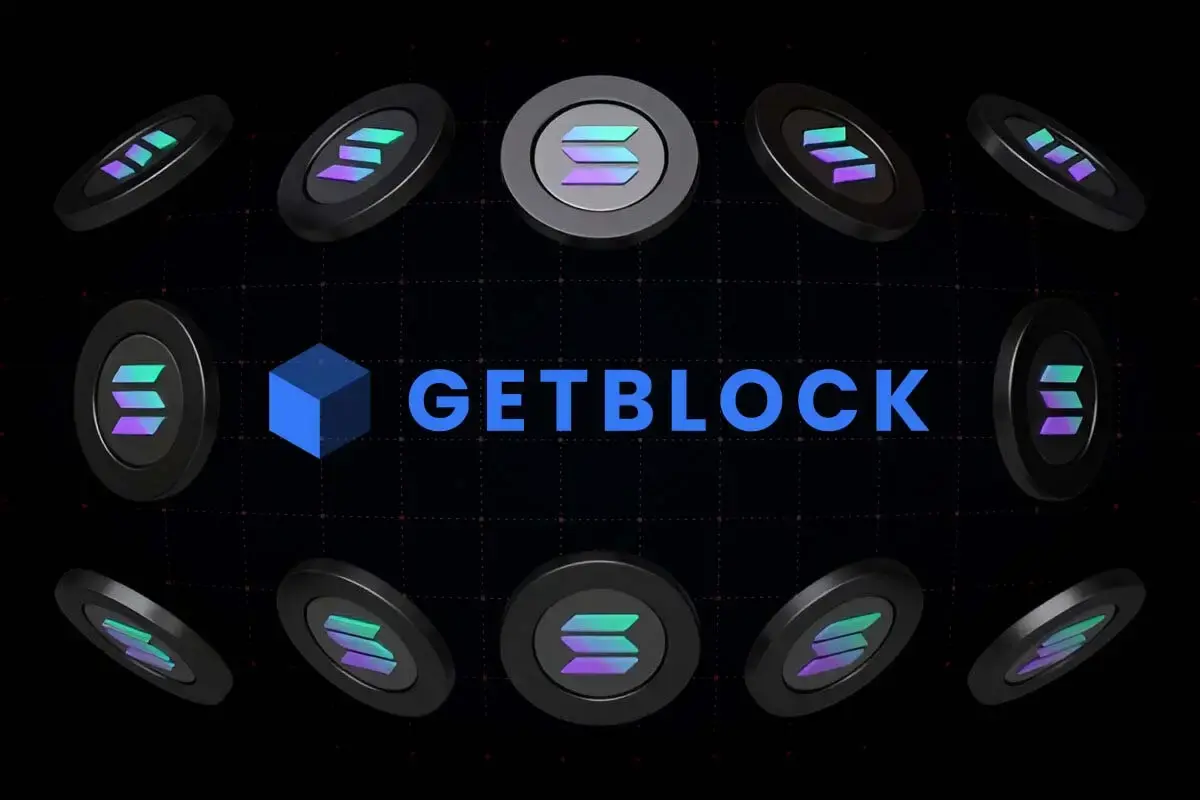GetBlock: Fastest Solana RPC Provider

Solana has emerged as a leading blockchain platform due to its unparalleled transaction speeds and innovative architecture. Its unique consensus mechanism and node structure enable high throughput while requiring substantial computational resources. Third-party providers like GetBlock offer optimized node access, balancing performance and cost for developers.
Solana speed and efficiency
With an average block time of 400 milliseconds and capacity for 65,000 transactions per second (TPS), Solana outperforms major blockchains like Ethereum (15-30 TPS) and Bitcoin (3-7 TPS) by orders of magnitude. This speed stems from three key innovations:
- Proof of History (PoH): A cryptographic clock that timestamps transactions before consensus
- Gulf Stream: Push-based transaction forwarding
- Turbine: Block propagation protocol using UDP
As a result, its DeFi platforms execute swaps in less than 1 second, while NFT mints complete faster than credit card transactions. Its gaming dApps support real-time interactions. That’s why Solana nodes are so popular and important nowadays.
H3 Is Solana the fastest blockchain?
While its practical speed is much lower than theoretical 65,000 TPS, it still consistently demonstrates the highest practical throughput among general-purpose blockchains. Benchmarks show that average Solana TPS is more than 1,000 and can even be higher than 1,500. It’s much faster than Bitcoin and Ethereum, and even faster than modern high-speed chains like Sui and TON, although their speed can be compared to Solana.
These capabilities come from Solana’s node architecture and high resource demands. Let’s look closer.
How Solana nodes work
There are two Solana node types: validator and RPC nodes. The former participate in consensus via PoH and require stake (minimum 1 SOL). They maintain the blockchain integrity and their owners can earn rewards through gas fees.
RPC nodes process API requests and are used to connect with dApps. They don’t participate in consensus and have higher RAM requirements, about 256GB and more.
Fastest Solana nodes
While Solana nodes have very high performance, they also demand a lot of computational resources, such as RAM, CPU, and internet speed.
- Hardware: 12-core/2.8GHz CPU, 256GB RAM, NVMe RAID
- Network: 10 Gbps dedicated connection
- Software: Optimized Linux kernel parameters
As a result, Solana’s fastest RPC nodes (read more on GetBlock) achieve 99.9% transaction success rate, less than 50ms API response times, and 100% block production participation
Setting up the Solana node
As we’ll see, Solana nodes require quite large computational resources.
Preliminary requirements
There are hardware requirements for running Solana RPC nodes:
- CPU 16-core/3.2GHz
- RAM 256GB
- Storage disk 4x1TB NVMe
- Internet speed 10 Gbps
Software Prerequisites are the next:
- Ubuntu 20.04/22.04 LTS
- Rust 1.65+
- LLVM 13+
- Python 3.10+
Downloading the software
There is the Unix CLI command to install Solana:
sh -c “$(curl -sSfL https://release.solana.com/stable/install)”
Additional resources, such as Rust and Python, as well as various plugins, should also be installed. Then, the computer ports should be properly configured. Use the official Solana documentation for the details.
Maintaining the node
To maintain the node, one should monitor the disk usage, which will be at 500 GB–1 TB. Also, it’s essential to check validator’s health status using the command line interface.
At least one per week, one should apply security updates and verify snapshot integrity. Lastly, account storage balance, SSL certificates, and firewall rules should be audited regularly, too.
Getting the fastest Solana RPC node
While self-hosting offers control, third-party providers deliver much better time and cost efficiency.
Setting up a node with such large resource usage as Solana costs more than $15,000, while more than $2,000 should be paid per month. Add tens of hours required to set up and maintain the node properly.
In addition, GetBlock provides benefits like:
- Geographic node distribution
- Automatic failover
- Historical data access
- Advanced APIs (WS, Web3)
Why GetBlock has the fastest RPC for Solana
GetBlock’s Solana infrastructure combines several performance advantages.
Developers report 99.99% uptime and 350ms average response time across GetBlock‘s Solana nodes, with pricing starting at $299/month for 1M requests.
Compared to the $2,500+/month cost of self-hosting equivalent hardware, this represents 88% cost savings while maintaining comparable performance metrics. So, using GetBlock Solana endpoints is a much easier and cheaper option for Solana developers.
Recent Posts
- sponsored
Building Through the Downturn – Why Smart Money Is Watching XYZVerse
Popular crypto voices predict a slow market movement for the short term, with traders seeing…
- sponsored
How BTC, Dogecoin, and Ethereum Mining Are Shaping the Future of Digital Income
The world of cryptocurrency is rapidly changing, and innovation in BTC mining, Dogecoin mining, and…
- sponsored
Breaking the Price-Cost Link: How Canxium’s Fixed Mining Model Tries to Tame Crypto Volatility
Cryptocurrency mining is a balancing act between price, cost, and network stability, and Bitcoin shows…
- sponsored
Next Crypto to Explode: Where and How to Buy Little Pepe (LILPEPE) in October 2025
Little Pepe (LILPEPE) has already raised more than $26 million and is currently being offered…
- sponsored
Crypto Presale Phenomenon: XRP Tundra Freezes $1.5M, Triple Audits Confirm Arctic Security
While most presales rely on hype to attract early funding, XRP Tundra has taken the…
- sponsored
Arc Miner: Enabling the Future of Profitable and Sustainable Cryptocurrency Mining Safely and Legally
Moving into a new era of regulation, institutional adoption, and technological efficiency for the crypto…